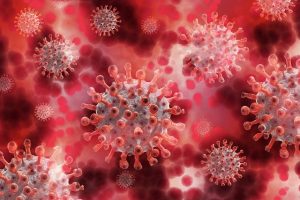bioRxiv: Delta mutant strains are more capable of causing symptoms
- Mifepristone: A Safe and Effective Abortion Option Amidst Controversy
- Asbestos Detected in Buildings Damaged in Ukraine: Analyzed by Japanese Company
- New Ocrevus Subcutaneous Injection Therapy Shows Promising Results in Multiple Sclerosis Treatmen
- Dutch Man Infected with COVID-19 for 613 Days Dies: Accumulating Over 50 Virus Mutations
- Engineered Soybeans with Pig Protein: A Promising Alternative or Pandora’s Dish?
- Severe Fever with Thrombocytopenia Syndrome (SFTS): A Tick-Borne Threat with High Mortality
bioRxiv: Delta mutant strains are more capable of causing symptoms and are more pathogenic.
bioRxiv: Delta mutant strains are more capable of causing symptoms and are more pathogenic. Why is Delta so “poisonous”? The infected animals lost a lot of weight, and the syncytia formed by the infected cells was 2.7 times larger
Recently, in a study published on the preprint server bioRxiv (without peer review), a research team from University of Tokyo Institute of Medical Sciences, Japan’s National Institute of Infectious Diseases and other institutions used in vitro cell culture and animal models. Experiments have shown that the delta mutant strain of the new coronavirus is more capable of causing symptoms and has a higher pathogenicity.
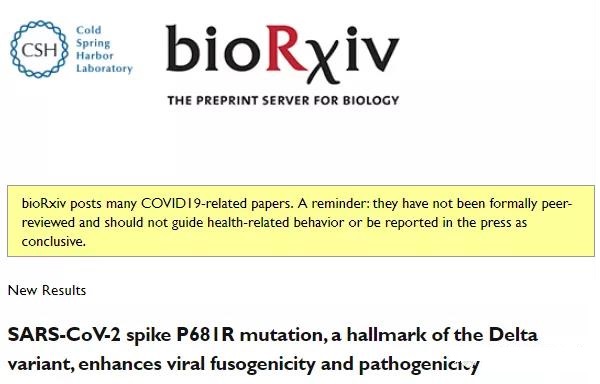
In this study, in order to study the virological characteristics of the Delta (B.1.617.2/Delta) mutant strain, the researchers first used the Delta isolate and the B.1.1 isolate carrying the D614G mutation for virology. experiment.
In Vero cells, the growth of the delta mutant strain was significantly lower than that of the B.1.1 isolate. Especially after 48 hours of infection, the viral RNA level of the delta mutant strain is more than 150 times lower than that of B.1.1. On the other hand, despite the similar growth kinetics of these viruses in cells, microscopic observations showed that Delta formed larger syncytia compared to the B.1.1 strain.
The researchers found through measurement that the syncytia formed by the delta mutant strain was 2.7 times larger than that of the B.1.1 infection. Immunofluorescence analysis further showed that Delta-infected cells showed larger multinucleated syncytia. These results indicate that, compared with the B.1.1 virus carrying D614G, the delta mutant strain can form larger syncytia.
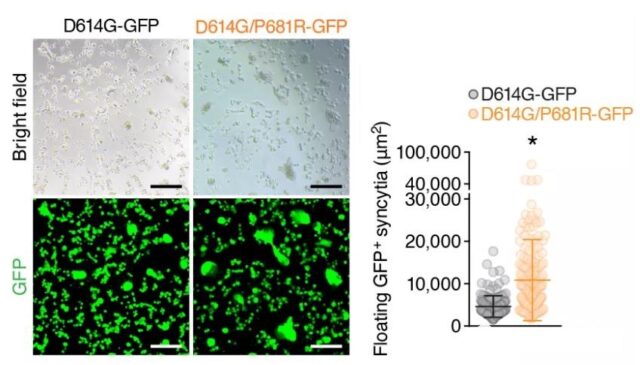
Subsequently, the researchers studied the pathogenicity of the two strains in the Syrian hamster model.
Researchers found that one week after infection with the virus, the weight of hamsters dropped significantly. Delta-infected weight decreased by up to 16%, and B.1.1-infected weight decreased by up to 13%. This indicates that the delta mutant strain is more pathogenic than B.1.1.
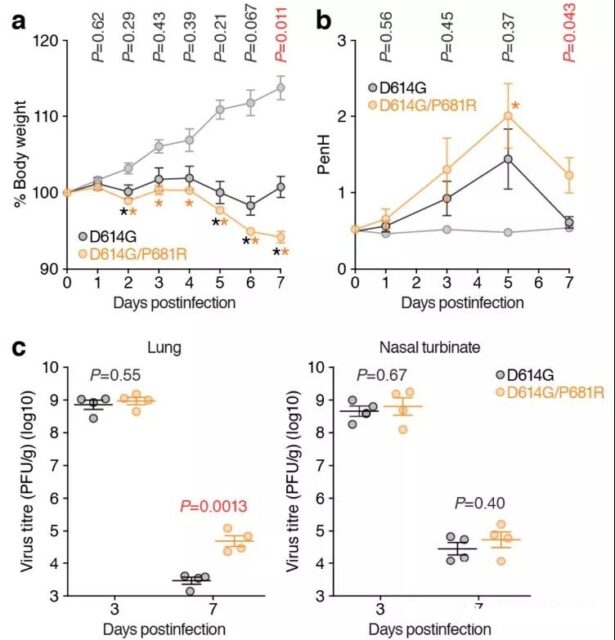
The P681R mutation in Spike protein (S protein) is located near the furin cleavage site and is a hallmark mutation of the delta mutant strain. Researchers speculate that the P681R mutation is just conducive to cell fusion, leading to the formation of larger syncytia. To this end, the researchers produced an artificial virus with P681R through reverse genetics and conducted virological experiments. The results they observed are in complete agreement with those observed in cell culture.
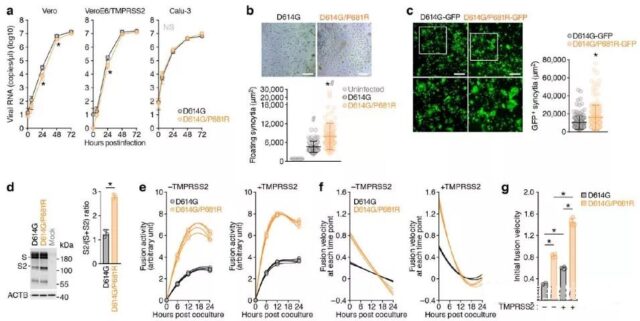
In conclusion, this study shows that the P681R mutation enhances the cleavage of the S protein and enhances the fusion of the virus. Therefore, the P681R mutation is responsible for the higher pathogenicity of the delta mutant strain.
(source:internet, reference only)
Disclaimer of medicaltrend.org
Important Note: The information provided is for informational purposes only and should not be considered as medical advice.



